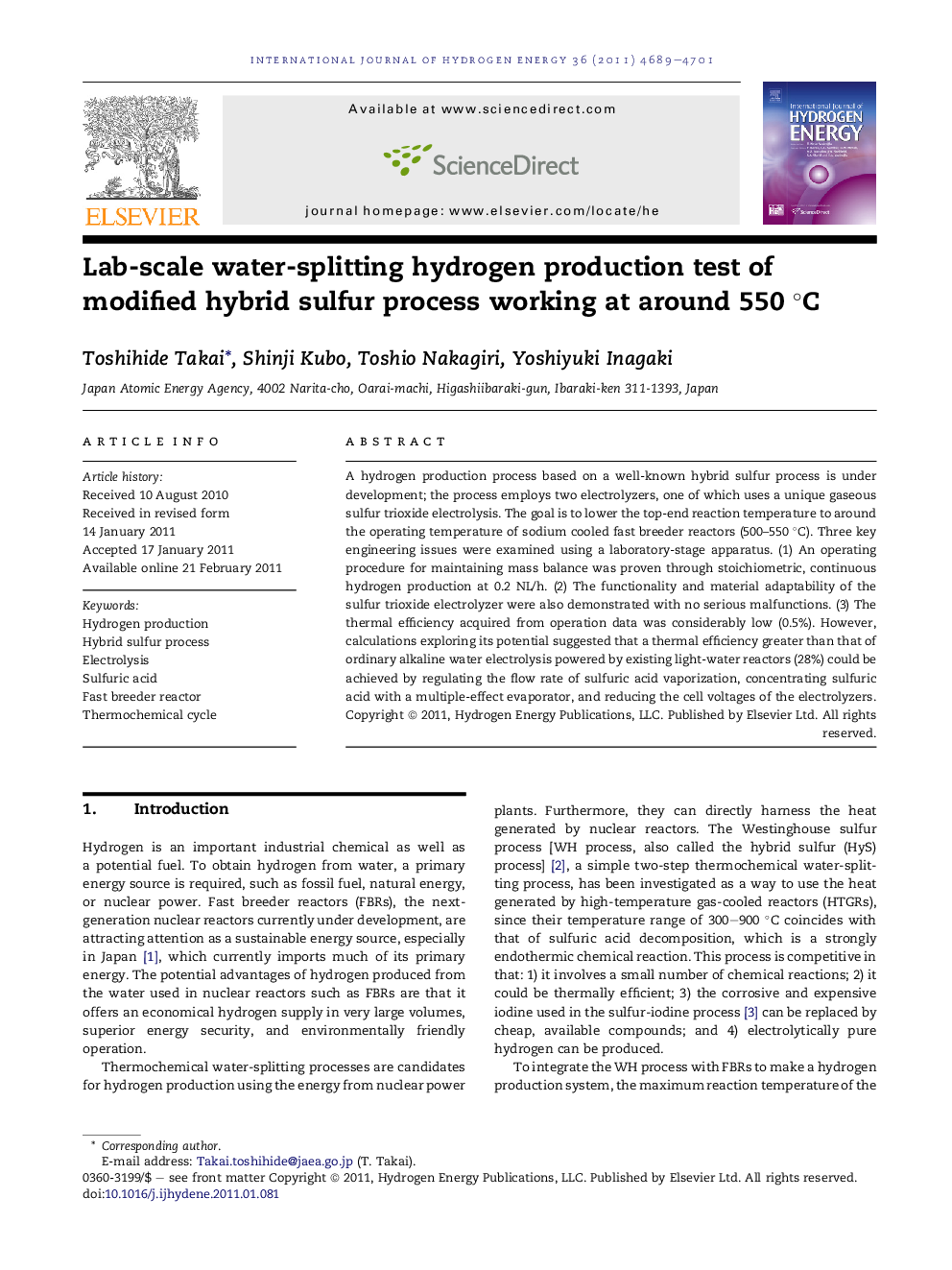| Article ID | Journal | Published Year | Pages | File Type |
|---|---|---|---|---|
| 1279776 | International Journal of Hydrogen Energy | 2011 | 13 Pages |
A hydrogen production process based on a well-known hybrid sulfur process is under development; the process employs two electrolyzers, one of which uses a unique gaseous sulfur trioxide electrolysis. The goal is to lower the top-end reaction temperature to around the operating temperature of sodium cooled fast breeder reactors (500–550 °C). Three key engineering issues were examined using a laboratory-stage apparatus. (1) An operating procedure for maintaining mass balance was proven through stoichiometric, continuous hydrogen production at 0.2 NL/h. (2) The functionality and material adaptability of the sulfur trioxide electrolyzer were also demonstrated with no serious malfunctions. (3) The thermal efficiency acquired from operation data was considerably low (0.5%). However, calculations exploring its potential suggested that a thermal efficiency greater than that of ordinary alkaline water electrolysis powered by existing light-water reactors (28%) could be achieved by regulating the flow rate of sulfuric acid vaporization, concentrating sulfuric acid with a multiple-effect evaporator, and reducing the cell voltages of the electrolyzers.
